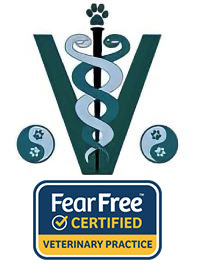Library
-
Every dog has wants and needs, including social interaction, physical exercise, intellectual exercise, and time to rest. When their needs are met predictably and enrichment is consistently available, dogs experience less stress and frustration and may be less likely to develop problematic behaviors.
-
Predictability and trust are important foundations for training your dog. Learning what your dog finds rewarding and strategically providing rewards at the right time will promote the desired behavior to happen more and more often. Punishment techniques using physical force and conflict can result in increased aggression and should be avoided.
-
Pets readily learn to engage in appropriate, desired behaviors through positive reinforcement methods. Reward-based training improves communication and provides enrichment for pets and people alike.
-
Uterine tumors are quite rare in North American pets, mainly due to routine spaying practices. Several types of tumors can arise from the tissues of the uterus. This handout discusses uterine tumors in dogs and cats. The various types of these tumors, along with the clinical signs, diagnosis, treatment, and prevention of this condition are outlined.
-
Uveitis is an inflammation of one or more of the structures making up the uvea (part of the eye). Signs of uveitis are severe pain with an intense reddening of the visible parts of the eye. Measurement of intraocular pressure is often performed to diagnose uveitis. Treatment involves reducing the pain and inflammation in the eye as well as treating the initial cause of the disease.
-
Uveitis is an inflammation of one or more of the structures making up the uvea (part of the eye). Signs of uveitis are severe pain with an intense reddening of the visible parts of the eye. Measurement of intraocular pressure is often performed to diagnose uveitis. Treatment involves reducing the pain and inflammation in the eye as well as treating the initial cause of the disease.
-
There are five primary reasons for vaccination failure. Vaccine inactivation is one reason and is most commonly caused by warming during shipping and handling. In addition, vaccines are not always 100% effective. Cats may also be unhealthy or too young, leading to vaccine failure. Interference by maternal antibodies can lead to the vaccine being blocked. Lastly, cats receiving overwhelming exposure to a virus may have a failure in the effectiveness of the vaccine.
-
There are six primary reasons for vaccination failure. Vaccine inactivation is one reason and is most commonly caused by warming during shipping and handling. In addition, vaccines are not always 100% effective. Dogs may also be unhealthy or too young, leading to vaccine failure. Interference by maternal antibodies can lead to the vaccine being blocked.
-
Vaccines are necessary to reduce infectious disease-caused illnesses in cats. They work by stimulating the body's immune system to recognize and fight a particular microorganism such as a virus, bacteria, or other infectious organism. The vaccine helps the body prevent infection or lessen the severity of the infection, and promotes rapid recovery.
-
Veterinarians routinely recommend certain vaccines for all dogs (called core vaccines) while they recommend others more selectively, according to the dog’s environment and lifestyle. Vaccines work by stimulating the body's immune system to recognize and fight particular microorganisms such as a virus, bacteria, or other organism. The vaccine helps prevent infection or lessens the severity of infection and promotes rapid recovery.


